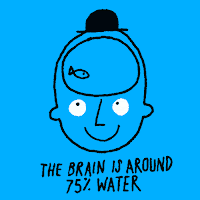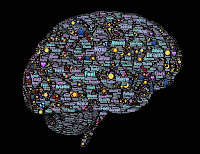* 10 FUN FACTS ABOUT THE BRAIN
Hey, What's up? What is your favorite song? Why did you choose that profession? How do you spend your free time? What is your best childhood memory? What do you feel most proud of?
Now, what's going on in your brain......?
Now, If you think, why did he ask those questions?
You have a brain...😅 So, let's start our topic..... (Only for those who have a brain)
10 FUN FACTS ABOUT THE BRAIN :
2. The human brain will grow three times its size in the first year of life. It continues to grow until you’re about 18 years old.
3. It is a myth that humans use only 10 percent of our brains. We really use everything. We use more than 10 percent when we sleep.
4. Dreams are believed to be a combination of imagination, psychological factors, and neurological factors. They prove that your brain works even when you are asleep.
5. Brain can store an estimated 2,500,000 GB (gigabytes). It is equal to approximately 20,000 smartphones capable of 128GB storage.
7. The typical brain comprises about 2% of the body’s total weight but uses 20% of our total blood supply (energy and oxygen intake).
8. Five minutes without oxygen can lead to brain cells dying, which causes brain damage.
9. The brain produces 12 to 25 watts of electricity. It is enough to run a low-watt light bulb.
10. The pain is processed in the brain and the brain cannot feel the pain. This is why when a patient is awake, brain surgeries can occur without oxides. Because the brain can't feel its own damage or pain.
Bonus points:
Each neuron can transmit 1,000 nerve impulses per second and make as many as tens of thousands of synaptic contacts with other neurons.
Neurons travel to the brain at a speed of 150 miles per hour. Different types of neurons move at different speeds








Very informative one
ReplyDeleteWow nice facts💯 and very useful💯🔥❤
ReplyDeleteReally the entire thing is informative and the way the way you presenting it is creative and makes easily too understand too ❤️🤗
ReplyDeleteHey to nicee
ReplyDeleteWow it's very interesting and informative 💯 🔥. And Keep going on many more new intersting updates.......👍✌️.
ReplyDeleteWowwww best you learn better you grow🔥🔥
ReplyDeleteUsefull facts bro post more informative blogs in future we are awaiting to learn....
ReplyDeleteNice 👍🏼
ReplyDelete